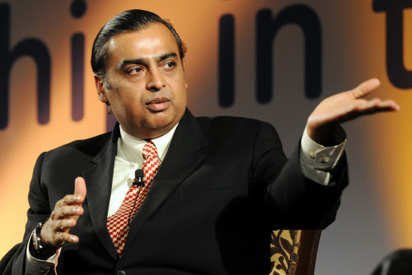The company has already spent USD 1.5 billion in acquisitions to lay grounds for its new energy forays that include solar, battery and hydrogen.
Reliance Industries Ltd’s strong cash flow generation in the ‘best in class’ old energy business can fund the capex of the new energy business and in turn drive one of the fastest and most profitable net-zero transitions by 2035 amongst large energy companies, Goldman Sachs has said.
Billionaire Mukesh Ambani in 2020 set a 2035 target for Reliance, which operates the world’s largest single-location oil refining complex and also has an array of petrochemical units, to turn net carbon zero by 2035.
The company has already spent USD 1.5 billion in acquisitions to lay grounds for its new energy forays that include solar, battery and hydrogen. The carbon savings on these are to offset emissions from oil and chemical businesses.
In an April 10 note, Goldman Sachs said Reliance is adopting a manufacturing approach to net zero emissions with a hyper integrated model spanning solar, battery and hydrogen and a focus on a net-zero supply chain.
“RIL’s energy business is best in class, in our view, with the highest complexity globally and the lowest cost structure driving stable and higher margin capture versus peers,” it said.
This helps the firm to earn higher refining margins over the industry benchmark.
“Alongside refining, we also expect (oil and gas) exploration and production (E&P) to drive the next leg of growth for the energy segment, as we estimate E&P EBITDA of USD 2-2.6 billion in FY23/24 versus USD 35 million in FY21 driven by rising domestic gas production and more than doubling of domestic gas prices,” it said.
While for petchem, margins are expected to trough in the current quarter and a recovery ahead led by economic run cuts from higher-cost North Asia crackers and likely underperformance of ethane prices to oil prices.
“We believe RIL’s investment in new energy can be fully funded by internal cash generation from their old energy business (oil-to-chemical) and in turn, could drive one of the fastest net-zero target (2035) amongst large energy value chain companies,” Goldman said.
It forecast EBITDA and free-cash-flow generation of USD 35 billion and USD 14 billion respectively over FY22 to FY24 from RIL’s old energy business as compared to USD 10 billion capex announced for New Energy.
On its new energy strategy, the brokerage said RIL is planning to manufacture polysilicon, wafers, cells, modules, EV and grid storage batteries, elelctrolyzer, and fuel cells.
“We see RIL as India’s largest greenabler with the company’s total projected outlay of USD 10 billion over the next three years. RIL has already spent USD 1.5 billion to acquire technologies across the solar battery and hydrogen ecosystems,” it said.
It saw significant expansion in the market for solar, battery and hydrogen manufacturing globally as well as in India and expected RIL to generate EBITDA of USD 3.6-12.2 billion by FY30 & FY40.
“We value RIL’s new energy segment at USD 30/48 billion in our base and bull case respectively,” it said. “The hyper integrated model can position RIL as one of the lowest cost green hydrogen producers with RIL targeting costs at around USD 1 per kg by end of this decade.”
For consumer-facing businesses of Reliance, Goldman Sachs forecast a compounded annual growth rate of 29 per cent in EBITDA for telecom between FY22-25 and a 43 per cent rise in retail EBITDA.
“While RIL is already the market leader in the telecom business, we expect market share wins to compound rising penetration for organized retail and e-commerce business.
“We believe RIL’s existing dominance in telecom and offline retail, combined with its partnership and the online traffic dominance of Facebook, can create the fastest-growing internet platform in India,” it said.
Within e-commerce, it forecast RIL’s online GMV will reach USD 35 billion in FY25 with a 31 per cent market share.
https://www.financialexpress.com/industry/reliances-unique-energy-transition-story/2488033/





